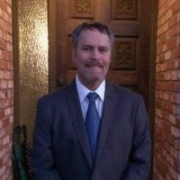AirMagnet Survey PRO offers comprehensive tools for wireless coverage optimization. It facilitates accurate SNR/RSSI data collection and features multi-floor planning with robust reporting capabilities. The software enables efficient spectrum analysis, predictive mapping, and simultaneous 2.4 GHz and 5 GHz surveys, saving significant time. Users appreciate its intuitive interface, which aids technical assessments and visual displays. However, they suggest improvements in multi-floor integration, file import options, and a more dynamic license system. Enhanced cloud storage support, improved auto-placement features, and better device compatibility are also on the wishlist.
What are the key features of AirMagnet Survey PRO?
- Dual Passive-Active Surveys: Streamline access point placement with dual survey types.
- Antenna Customization: Tailor antenna parameters for optimal performance.
- Predictive Mapping: Visualize potential coverage areas before deployment.
- Spectrum Integration: Analyze interference and optimize signal paths.
- Simultaneous 2.4 GHz and 5 GHz Surveys: Conduct faster, comprehensive surveys across frequency bands.
What benefits should users look for in reviews of AirMagnet Survey PRO?
- Accurate Data Collection: Highly precise SNR/RSSI measurements improve network assessments.
- Time Efficiency: Reduce survey duration with dual-band simultaneous assessments.
- User-Friendly Interface: Simplifies complex tasks with intuitive visual tools.
- Comprehensive Reporting: Offers detailed analysis and insights into network performance.
- Cost Savings: Efficient planning and troubleshooting lead to reduced deployment costs.
In industries like hospitality, education, and healthcare, AirMagnet Survey PRO is instrumental in wireless network surveying and design. These sectors rely on the software for precise Wi-Fi coverage assessments, spectrum analysis, and real-time signal checks, using heat maps to identify dead zones for pre and post-installation verifications. Some opt for alternatives to support newer technologies like Wi-Fi 6E.


